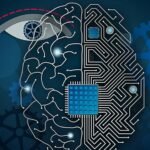Sharing chemical knowledge between human and machine
Research team develops AI tool that translates chemical structures into machine-readable codes
Chemists have long relied on structural formulae to understand the composition and arrangement of chemical compounds. These formulae provide insights into reactions between molecules, synthesis of complex compounds, and potential therapeutic effects of natural substances. However, while these visual representations are intuitive for humans, they’re not easily processed by software. To bridge this gap, a team led by Prof. Christoph Steinbeck and Prof. Achim Zielesny has developed an AI tool called “DECIMER” (Deep Learning for Chemical Image Recognition).
DECIMER transforms images of chemical structural formulae into machine-readable code. This open-source platform automatically identifies and classifies images in scientific articles, converting recognized structural formulae into machine-readable structure codes. For instance, the caffeine molecule’s structural formula becomes the code CN1C=NC2=C1C(=O)N(C(=O)N2C)C. This code can be uploaded into databases and linked with additional molecule information.
The AI tool employs modern AI methods, similar to those used in Large Language Models like ChatGPT. To train DECIMER, the researchers utilized existing machine-readable databases, generating around 450 million structural formulae for training data. Companies and researchers are already using DECIMER to convert structural formulae from patent specifications into databases.
The inspiration for DECIMER arose from the development of AI methods for the ancient Asian board game Go. The chemists were intrigued by the capabilities of AI during the famous Go tournament between human champion Lee Sedol and the AI software “AlphaGo.” Realizing the potential of AI, the researchers aimed to apply these methods to solve complex problems in their field.
The team aspires to make chemical literature from the 1950s onwards machine-readable, preserving knowledge and sharing it with the scientific community. This effort aligns with Prof. Steinbeck’s role as the coordinator of Germany’s National Research Data Infrastructure for Chemistry.


































